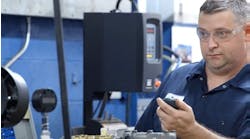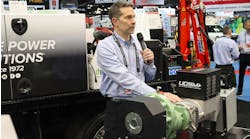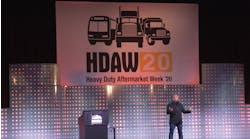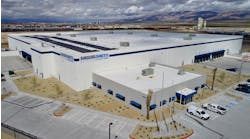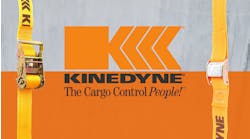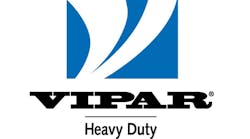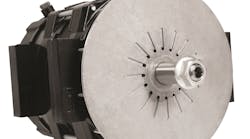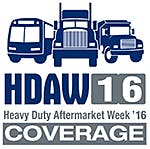MERCHANDISING is becoming an important—if not the most important—sales tool used in the heavy-duty industry because it allows distributors to implement new market strategies via store layout and visual display applications, according to Butch Hill, president of Hill Diversified Group LLC.
He said a company can increase its business $500 to $1200 in its showroom just by merchandising. And it applies not just to companies with big stores—stores from 400 square feet to 18,000 square feet can experience the boost.
In his presentation, “The Importance of Merchandising,” Hill said HD distributors have discovered the importance of these strategies and opportunities, especially when learning the money they are leaving on the table.
Over the years, he has worked with many companies, including NAPA, AutoZone, and O’Reilly, learning their store merchandising needs. In 1999, he created the industry’s first heavy-duty merchandising seminar and has visited distributors across the country, helping them with their store merchandising.
“I guarantee you if you took a poll of your customers, they have no idea of all the products you have back there,” he said.
“You hide your product in this industry. But it’s very easy to merchandise it. You can put it into your showroom right now. Just go study what the automotive industry does. It’s very simple. All the products are out where you can see them.”
Merchandising is important because: a new look attracts customers; current customers buy more; and it increases impulse sales, the average dollar transaction, seasonal items, the number of products stocked, market share, and customer awareness of product lines.
“I get pushback from this industry all the time: ‘Oh, I can’t see how doing this is going to get more people into my store,’” he said. “You’d be amazed at how merchandising bleeds through your region. You don’t hear it with your ears but your customers are talking to their friends and people they work with. Your traffic flow in your store will increase.”
He said the sales floor is the most important thing.
• 500 square feet: minimal product area. “All these techniques are the same, but you can only do so much at 500 square feet. You can be very effective at 500 if you don’t hide your products and merchandise it right.”
• 1000 feet: cannot display major categories. “You start getting a little better at it.”
• 1000-1500 square feet: major categories must scale down. “Some of these manufacturers have huge products. It might take up an eight-foot to a 12-foot gondola run. Most gondolas are in four-foot or three-foot sections. A run if you’re using that in your showroom is not effective. But some of these manufacturers’ products warrant having to go longer in your run. If it was me, I’d put less of their products and get more of the shorter gondolas.”
• 2000 square feet: effective product area. “You can start introducing some of those runs if you have to do it. Even color comes into play when it comes to buying decisions. They get more pleasing to you in the eye.”
He said the location of the counter and the gondolas will actually feed a customer through the store in the correct way, thus creating more opportunities for sales.
The strategy with gondolas:
• Plan and analyze traffic flow. “Even if you are a great merchandiser, how often do you do that? We get comfortable doing it the way we’ve been doing it for 20 to 25 years, maybe longer. If you start analyzing and looking and planning and see how the human walks through your store and what they walk across or step over, what they’re doing will be surprising to you.”
• Expose as many aisles as possible to the customer. “But you don’t want to overdo it. There’s a fine line somewhere.”
• Use shorter gondolas rather than long runs. “Usually the gondolas have slot walls. You can go up to at least nine feet in most stores.”
• Do not lay gondolas as a barrier.
• No mazes. “You’ve probably seen this at Office Depot, where they run through all the candy and make a loop around to the checkout. What it does is make you think, ‘I’ve got to just get to the counter. I’m not looking at everything.’ If you put barriers up, they don’t work for you. No mazes.”
• Place perpendicular to the main aisles.
• Efficient layout will literally “pull” the customer down the aisles. “In a simple showroom of 700 square feet, turn the gondolas to expose ideas. Our job isn’t to make them go to the counter. Our job is to let them see all the aisles and get the difficult sales we’re looking for.
“Let’s make this even better. Put seasonal items or products on endcaps. It’s cleaner and more uniform. With gondolas, how many of you guys put them on wheels? Put them on wheels. Just in this small room, just three times a year, change those up and swap positions, sliding one from here to there. You can take an eight-foot gondola three feet wide and move them with one finger.”
Zone your layout into category arrangement with mini-departments:
• Traffic pull. “In the heavy-duty industry, what would pull somebody over that wall? Chrome. In this industry, what guy or gal—mostly guys, in this case—doesn’t like to touch, look at, and feel chrome? There’s something about chrome. It’s a great-looking display, too. I don’t care what chrome you have. If you come into a showroom and chrome is right next to the counter, I don’t get the opportunity to pull you through all the stuff I want to merchandise to you. Chrome should be right down in the front or side, so I can pull you in directions through the store. It’s all about impressions. How many times can I get you to go through the product and how many times can I get you to come back to the counter? The other guy in this town has heavy-duty products. Why do I buy it from you? Knowledge and service.”
• Maximum exposure. “That’s when you get in there and walk through the showroom and you’re seeing things. You might have to stop, but you’re getting maximum exposure. You’re seeing it longer than anything else you’ve seen in the store. That’s when I hang out when I come to order from you. I come to the counter, and that’s maximum exposure—what’s on the counter and behind the counter. And if I turn around, there are gondolas with maximum exposure.”
• Seasonal products. “They have to go on endcaps.”
• Minimum exposure. “That’s the items that don’t get looked at very often when we’re parading through to put the order in or parading back through.”
Endcaps are for:
• High-volume products.
• Seasonal items.
• New items.
• High-quality/high-priced. “Do you price your products? You should. Let’s go to the grocery store. Nothing’s priced. What’s on your list? Milk and bread are the highest-volume items in the grocery store. But nothing in the store is priced. I get pushback in this industry: ‘I can’t price it.’ But then again, everybody I see after we work on their showroom and make it right, they price everything. And every time, they all bat 1.000 on this. Every time they’re like, ‘It’s amazing.’”
• Include related items. “There’s a whole theory of looking at a gondola, of how a gondola actually functions—left, right, up, down. A lot of times we just throw items on it and we have no clue why. There’s no thought process as to the buying habits of your customer. If you get into those things, you’ll start understanding why and where you should put them.
“It’s all about the impulse sale. If a guy picks up wiper blades, he goes, ‘Look here, windshield wiper fluid.’ He grabs that because he can make that decision quickly. It’s right there. You’ve got 2/10 of a second to make that decision. If that wiper fluid is way over there, it’s such a minimally priced item that there’s no reason to go shopping around for it.
“We read books left to right as a human, and we shop the same way. To click the little thing that’s in my brain that says. ‘I need that,’ we’re going to likely take the last thing we looked at. So put the one that makes you the most margin on the right.”
The strategy with bulk stack displays:
• Wide traffic areas. “How big should the space be between a gondola and the next gondola? If you put it at three feet, you’re going to lose sales. Here’s why: Bob is a customer and in that three-foot area, and he is looking. The next Joe comes in and sees something that he needs, but Bob is in his way. He’s not going to interrupt Bob. With four-foot aisles, two people can pass through.”
• Bulk stacks make the customer perceive a well-stocked store.
• Signs and pricing let the customer know that you have competitive pricing. “It’s just an 8½x11 sign they made. If you don’t put signs and pricing, you don’t have the ability to make that impulse sale.”
Reasons to merchandise:
• Bulk displays increase sales 420%. “Or you can leave it behind the wall and not get 420%.”
• Bulk displays with a sign increase sales 501%.
• As-advertised signs without a price will increase sales 124%. “You can get some traction over not doing it, but it’s really not the way to go.”
• With a certain percent off, sales increase 24%. “Percentage off of what? Ever go into a retail world outside of your heavy-duty industry and see a percentage-off sale? What’s the first thing that goes through your mind? ‘Well, they marked it up to get the percentage back to where I want it.’
Where do we start? You have no idea.”
• A store-wide sale increases sales 153%. “They’re OK. They give you some marketing. I would do it occasionally, but it’s not powerful.”
He said many managers use counter stools because every place where they’ve ever worked has had counter stools. But the bad news is that they’re not going to help impulse sales.
“We’re sitting down, so having counter stools is not really effective to make money,” he said. “If it was me, counter stools have got to go. There’s a flow to the showroom floor. We don’t want anyone sitting if they’re waiting for parts to be delivered. We want them to walk through the showroom and see the other products we carry.
The strategy for manufacturers’ displays:
• Choose displays wisely.
• Do they fit your floor layout?
• Consider item popularity.
• Move them around the store.
“These kinds of things are usually going to be on the perimeter walls, and I recommend moving them around twice a year,” he said.
With coffee, soda, and popcorn, he recommends keeping the display clean and fresh, using small cups and bags. And don’t put them in waiting rooms, because those are “caves” that are useful only for naps and are places where people can’t “see all the cool merchandise.” Put them near the front door in the corner—not by the counter, where most companies put them.
“By offering soda and popcorn the customer thinks you’re a good guy,” Hill said. “He doesn’t realize you want him to walk through all the products, and have the impulse light go on.” ♦

